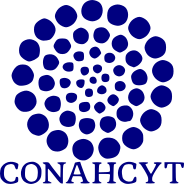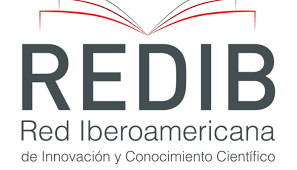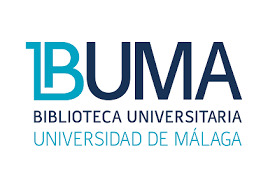Regeneración in vitro de Tillandsia takizawae Ehlers & H. Luther
Micropropagación de bromelias
DOI:
https://doi.org/10.18387/polibotanica.57.10Palabras clave:
bromelia, endémica, epífita, germinación, organogénesisResumen
Tillandsia takizawae Ehlers & H. Luther es una bromelia epífita microendémica de México de inflorescencias vistosas con brácteas de color rosa que contrastan con las flores de color verde. Estos atributos le otorgan potencial como planta ornamental. La conservación de la especie y aprovechamiento comercial requiere de sistemas de propagación eficientes que eviten la extracción de plantas de su hábitat natural. Los objetivos de esta contribución fueron establecer las condiciones óptimas para la germinación in vitro de semillas y la regeneración de plantas por organogénesis. Semillas se sembraron en medio MS con la mitad de concentración de sales adicionado con BA y ANA. Para el alargamiento y enraizamiento de plantas se avaluó el AG3 y el AIB, respectivamente. En todos los tratamientos se obtuvo una germinación promedio de 97%. La combinación de BA y ANA favorecieron la inducción de brotes en las plántulas recién germinadas. La mayor cantidad de brotes por explante fue de 41.4 con 1 mg L-1 de BA y 0.25 mg L-1 de ANA a las 12 semanas de cultivo. El alargamiento de plantas se logró en el medio MS completo con 1 mg L-1 de AG3 después de 8 semanas. La mejor respuesta de enraizamiento fue con 1 mg L-1 de AIB a las 4 semanas. En la aclimatación de plantas la supervivencia fue de 95 % después de 4 semanas.
Referencias
Anis, M., & Ahmad, N. (2016). Plant tissue culture: a journey from research to commercialization. In Anis, M., & Ahmad, N. (Eds.). Plant tissue culture: propagation, conservation and crop improvement (3-13). Springer Science+Business Media. Singapore. https://doi.org/10.1007/978-981-10-1917-3_1
Benzing, D. H. (2000). Bromeliaceae: Profile of an adaptive radiation. Cambridge University Press. United Kingdom. 655 p.
Dal Vesco, L. L., & Guerra, M. P. (2010). In vitro morphogenesis and adventitious shoot mass regeneration of Vriesea reitzii from nodular cultures. Scientia Horticulturae, 125(4), 748-755. http://dx.doi.org/10.1016/j.scienta.2010.05.030
Derio Antonio Jiménez-López, D. A., Solórzano, J. V., Vibrans, H., Espejo-Serna, A., & Peralta-Carreta, C. (2019). Ceremonial use of bromeliads and other vascular epiphytes in cemeteries of two indigenous communities of Las Margaritas, Chiapas, Mexico. Economic Botany, 73 (1), 127-132.
Droste, A., Silva, A. M. D., Matos, A. V., & Almeida, J. W. D. (2005). In vitro culture of Vriesea gigantea and Vriesea philippocoburgii: two vulnerable bromeliads native to Southern Brazil. Brazilian Archives of biology and Technology, 48, 717-722. http://dx.doi.org/10.1590/S1516-89132005000600006
Ehlers, R. (2000). A new Tillandsia from southern Mexico. Journal of the Bromeliad Society, 50, 216-221.
Espejo A., A. & López-Ferrari, A. R. (2018). La familia bromeliaceae en México. Botanical Sciences, 96 (3), 533-554. https://doi.org/10.17129/botsci.1918
García-Martínez, R., & Beutelspacher, C. R. (2022). A new stoloniferous species of Catopsis (Bromeliaceae) from Chiapas, Mexico. Journal of the Bromeliad Society, 72 (3), 119-127.
Guerra, M. P., & Dal Vesco, L. L. (2010). Strategies for the micropropagation of bromeliads. In: Jain S. M., Ochatt S. J. (Eds.). Protocols for in vitro propagation of ornamental plants (589:47-66). Methods in Molecular Biology. Humana Press–Springer, New York. http://dx.doi.org/10.1007/978-1-60327-114-1_6
Hernández-Cárdenas, R. A., Espejo-Serna, A., López-Ferrari, A. R., & Lara-Godínez, S. A. L. (2020). Tillandsia dichromantha (Tillandsioideae; Bromeliaceae), a new species from the state of Oaxaca, Mexico. Phytotaxa, 447 (2), 81-87. https://doi.org/10.11646/phytotaxa.447.2.1
Hernández-Meneses, E., Rangel-Estrada, S. E., López-Peralta, M. C. G., Guerrero-Hilario, A., Ortiz-Gil G., & Martínez-Bolaños, L. (2018). Germinación, viabilidad y regeneración in vitro de plantas de Vriesea heliconioides (Kunth) Hook. Ex Walp. Revista Fitotecnia Mexicana, 41(2), 99-106. https://doi.org/10.35196/rfm.2018.2.99-106
Hietz, P., Winkler, M., Scheffknecht, S., & Hülber, K. (2012). Germination of epiphytic bromeliads in forests and coffee plantations: microclimate and substrate effects. Biotropica, 44(2), 197-204. https://doi.org/10.1111/j.1744-7429.2011.00791.x
Hornung-Leoni, C. T. (2011). Bromeliads: traditional plant food in Latin America since prehispanic times. Polibotánica, 32, 219-229.
Laube, S., & Zotz, G. (2003). Which abiotic factors limit vegetative growth in a vascular epiphyte?. Functional ecology, 17(5), 598-604. https://doi.org/10.1046/j.1365-2435.2003.00760.x
Luther, H. E. (2014). An alphabetical list of bromeliad binomials. 14th edition. The Marie Selby Botanical Gardens and The Bromeliad Society International. Florida, U.S.A. 41 p.
Márquez-Martínez, J., López-Peralta, M. C. G., Hernández-Meneses, E., & Cruz-Huerta, N. (2020). Regeneración in vitro de plantas de Tillandsia viridiflora (beer) baker por organogénesis directa. Agrociencia, 54(6), 763-778. https://doi.org/10.47163/agrociencia.v54i6.2180
Meza-Espinoza, L., García-Magaña, M. L., Vivar-Vera, M.A., Sáyago-Ayerdi, S. G., Chacón-López, A., Becerra-Verdín, E. M., Muy-Rangel, M. D., & Montalvo-González, E. (2017). Aspectos etnobotánicos, nutricionales y actividad biológica de extractos de frutos del género Bromelia. Revista Fitotecnia Mexicana, 40 (4), 425-437.
Mondragón-Chaparro, D. M., Ramírez-Morillo, I. M., Flores-Cruz, M., & García-Franco, J. G. (2011). La familia bromeliaceae en México. Universidad Autónoma Chapingo. México. 100 p.
Murashige, T., & Skoog, F. (1962). A revised medium for rapid growth and bioassays with tabacco tissue cultures. Physiol. Plantarum, 15 (3), 473-493. https://doi.org/10.1111/j.1399-3054.1962.tb08052.x
Phillips, G. C., & Garda, M. (2019). Plant tissue culture media and practices: an overview. In Vitro Cellular & Developmental Biology-Plant, 55, 242-257. https://doi.org/10.1007/s11627-019-09983-5
Pickens, K. A., Affolter, J. M., Wetzstein, H. Y., & Wolf, J. H. (2003). Enhanced seed germination and seedling growth of Tillandsia eizii in vitro. HortScience, 38(1), 101-104. https://doi.org/10.21273/HORTSCI.38.1.101
Pickens, K.A., Wolf, J., Affolter, J.M. & Wetzsteinet, H. Y. (2006). Adventitious bud development and regeneration in Tillandsia eizii. In Vitro Cellular & Developmental Biology-Plant, 42, 348–353. https://doi.org/10.1079/IVP2006779
Pompelli, M. F., & Guerra, M. P. (2005). Micropropagation enables the mass propagation and conservation of Dyckia distachya Hassler. Crop Breeding and Applied Biotechnology, 5(1), 117-126.
SAS Institute (2003) The SAS system for windows. Release 9.1. SAS Institute. Cary, N.C., U.S.A.
Winkler, M., Huelber, K., & Hietz, P. (2005). Effect of canopy position on germination and seedling survival of epiphytic bromeliads in a Mexican humid montane forest. Annals of Botany, 95(6), 1039-1047. https://doi.org/10.1093/aob/mci115
Descargas
Publicado
Número
Sección
Licencia

Polibotánica por Departamento de Botánica de la Escuela Nacional de Ciencias Biológicas del Instituto Politécnico Nacional se distribuye bajo una Licencia Creative Commons Atribución-NoComercial-CompartirIgual 4.0 Internacional.




















